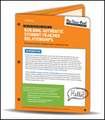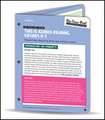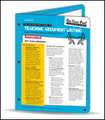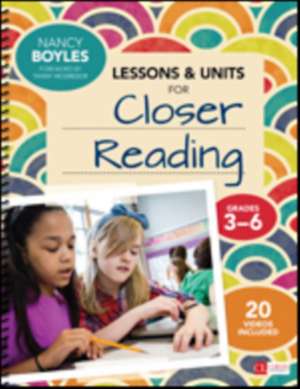Lessons and Units for Closer Reading, Grades 3-6: Ready-to-Go Resources and Planning Tools Galore: Corwin Literacy
Autor Nancy N. Boylesen Limba Engleză Electronic book text – 28 ian 2015
In Part I of the book Boyles explains the why behind the how of using picture books that share a theme as the basis for extended units, spelling out for teachers the difference between her brand of investigation and “units of study” which have common pitfalls.
In Part two of the book, she provides 10 text sets, each spanning about 15 pages that cover commonly taught themes such as leadership and survival.
- Boyles has an intuitive sense of what teachers today need in order to improve, and this book gives them 10 text sets they can turn around and teach tomorrow, which is more than a year’s worth of quality instruction.
- In the CCSS era with big stakes tests looming, this book gets teachers to fast track top CCSS instruction and includes formative assessments to help teachers get a handle on student’s progressing skills as readers, thinkers, and writers.
Din seria Corwin Literacy
-
 Preț: 285.18 lei
Preț: 285.18 lei -
 Preț: 158.08 lei
Preț: 158.08 lei -
 Preț: 278.39 lei
Preț: 278.39 lei -
 Preț: 243.82 lei
Preț: 243.82 lei -
 Preț: 244.25 lei
Preț: 244.25 lei -
 Preț: 88.42 lei
Preț: 88.42 lei -
 Preț: 273.64 lei
Preț: 273.64 lei -
 Preț: 274.70 lei
Preț: 274.70 lei -
 Preț: 148.40 lei
Preț: 148.40 lei -
 Preț: 248.26 lei
Preț: 248.26 lei -
 Preț: 284.26 lei
Preț: 284.26 lei -
 Preț: 294.79 lei
Preț: 294.79 lei -
 Preț: 281.36 lei
Preț: 281.36 lei -
![Mindsets and Moves: Strategies That Help Readers Take Charge [Grades K-8]](https://i3.books-express.ro/bs/9781506314938/mindsets-and-moves.jpg) Preț: 156.17 lei
Preț: 156.17 lei -
 Preț: 283.27 lei
Preț: 283.27 lei -
 Preț: 88.42 lei
Preț: 88.42 lei -
 Preț: 281.94 lei
Preț: 281.94 lei -
 Preț: 248.26 lei
Preț: 248.26 lei -
 Preț: 278.64 lei
Preț: 278.64 lei -
 Preț: 267.50 lei
Preț: 267.50 lei -
 Preț: 200.91 lei
Preț: 200.91 lei -
 Preț: 270.76 lei
Preț: 270.76 lei -
 Preț: 237.15 lei
Preț: 237.15 lei -
 Preț: 278.10 lei
Preț: 278.10 lei -
 Preț: 245.45 lei
Preț: 245.45 lei -
 Preț: 204.26 lei
Preț: 204.26 lei -
 Preț: 272.62 lei
Preț: 272.62 lei -
![Every Minute Matters [Grades K-5]: 40+ Activities for Literacy-Rich Classroom Transitions](https://i4.books-express.ro/bs/9781544382449/every-minute-matters-grades-k-5.jpg) Preț: 193.61 lei
Preț: 193.61 lei -
 Preț: 274.00 lei
Preț: 274.00 lei -
![Flash Feedback [Grades 6-12]: Responding to Student Writing Better and Faster – Without Burning Out](https://i4.books-express.ro/bs/9781544360492/flash-feedback-grades-6-12.jpg) Preț: 232.71 lei
Preț: 232.71 lei -
 Preț: 88.67 lei
Preț: 88.67 lei -
 Preț: 147.92 lei
Preț: 147.92 lei -
 Preț: 273.44 lei
Preț: 273.44 lei -
 Preț: 216.22 lei
Preț: 216.22 lei -
 Preț: 88.67 lei
Preț: 88.67 lei -
 Preț: 236.11 lei
Preț: 236.11 lei -
 Preț: 209.15 lei
Preț: 209.15 lei -
 Preț: 256.83 lei
Preț: 256.83 lei -
 Preț: 291.04 lei
Preț: 291.04 lei -
 Preț: 288.67 lei
Preț: 288.67 lei -
 Preț: 273.44 lei
Preț: 273.44 lei -
 Preț: 184.56 lei
Preț: 184.56 lei -
 Preț: 174.52 lei
Preț: 174.52 lei -
 Preț: 244.44 lei
Preț: 244.44 lei -
 Preț: 140.61 lei
Preț: 140.61 lei -
 Preț: 278.10 lei
Preț: 278.10 lei -
![Comprehension [Grades K-12]: The Skill, Will, and Thrill of Reading](https://i3.books-express.ro/bs/9781071812839/comprehension-grades-k-12.jpg) Preț: 287.79 lei
Preț: 287.79 lei -
 Preț: 218.84 lei
Preț: 218.84 lei -
 Preț: 277.50 lei
Preț: 277.50 lei -
 Preț: 273.44 lei
Preț: 273.44 lei
Preț: 193.23 lei
Nou
Puncte Express: 290
Preț estimativ în valută:
32.63€ • 33.71$ • 27.16£
32.63€ • 33.71$ • 27.16£
Indisponibil temporar
Doresc să fiu notificat când acest titlu va fi disponibil:
Se trimite...
Preluare comenzi: 021 569.72.76
Specificații
ISBN-13: 9781483389868
ISBN-10: 1483389863
Pagini: 336
Dimensiuni: 216 x 279 mm
Ediția:1
Editura: SAGE Publications
Colecția Corwin
Seria Corwin Literacy
Locul publicării:Thousand Oaks, United States
ISBN-10: 1483389863
Pagini: 336
Dimensiuni: 216 x 279 mm
Ediția:1
Editura: SAGE Publications
Colecția Corwin
Seria Corwin Literacy
Locul publicării:Thousand Oaks, United States
Recenzii
“Lessons
and
Units
for
Closer
Readingreassures
teachers
like
me
to
the
same
degree
that
it
instructs.
It
is
no
accident
that
Nancy
uses
words
likecoherence,
connections,andsynergyin
her
opening
pages.
Through
her
unit
and
lesson
design,
she
brings
that
coherence
to
us
in
incremental,
practical
ways—ways
that
new
and
experienced
teachers
can
easily
absorb
into
their
teaching
practices.
Nancy
is
giving
us
what
wewant:
specific
lesson
ideas
based
on
a
solid
framework
that
uses
children’s
literature,
but
it
is
actually
what
weneed,
too.”
“In her new book,Lessons and Units for Closer Reading,Nancy Boyles offers teachers what they ask for and need the most—practical, useable strategies and examples in the form of actual close reading lessons—32 to be exact—along with 23 videos accessible through QR codes that show how to implement these close reading lessons and related strategies. What a treasure trove of modeling and guidance for teachers! As a former elementary educator myself, how I wish I had had this powerful resource to help me become a better teacher of reading.”
“The Common Core Standards call for students to be able to read texts closely to make meaning and for students to build knowledge systematically (CCSS for ELA, p. 33, 2010). This book provides a vivid picture of instruction that supports this kind of learning. Boyles’ text speaks to the teacher who has been grappling with how to develop units and strategically integrate close reading lessons, providing clarity and inspiration. This is a must-have text for educators and will remain a go-to resource in my professional library for many years to come.”
“Now you understand what close reading is, but you need the nitty-gritty. Presto, Nancy Boyles delivers eight stellar units of study. Her lessons are practical, the text-dependent questions for all those marvelous picture books save you a few weeks of arduous planning. But what I admire most of all? The gallery of student work she’s gathered, with her commentary about strengths, needs, next steps. It’s a rare window into another practitioner’s thinking about what constitutes higher-level reading and writing work. Everybody’s talking about it, but no one has done such a good job showing it until now.”
“Everywhere you turn, headlines call for students to read withdepthandrigor. But few teachers get the support they need to bring this about for 25+ students each and every school day. Nancy Boyles’ new book gives them that ‘how-to,’ and it’s remarkable. She provides seven units of study [plus] a valuable planning guide that shows them how to design their own units with a depth that motivates and engages students. Once teachers ace the planning process, the day-to-day implementation of the units becomes easier. I predict that this book will become teachers’ favorite resource for unit design.”
“In her new book,Lessons and Units for Closer Reading,Nancy Boyles offers teachers what they ask for and need the most—practical, useable strategies and examples in the form of actual close reading lessons—32 to be exact—along with 23 videos accessible through QR codes that show how to implement these close reading lessons and related strategies. What a treasure trove of modeling and guidance for teachers! As a former elementary educator myself, how I wish I had had this powerful resource to help me become a better teacher of reading.”
“The Common Core Standards call for students to be able to read texts closely to make meaning and for students to build knowledge systematically (CCSS for ELA, p. 33, 2010). This book provides a vivid picture of instruction that supports this kind of learning. Boyles’ text speaks to the teacher who has been grappling with how to develop units and strategically integrate close reading lessons, providing clarity and inspiration. This is a must-have text for educators and will remain a go-to resource in my professional library for many years to come.”
“Now you understand what close reading is, but you need the nitty-gritty. Presto, Nancy Boyles delivers eight stellar units of study. Her lessons are practical, the text-dependent questions for all those marvelous picture books save you a few weeks of arduous planning. But what I admire most of all? The gallery of student work she’s gathered, with her commentary about strengths, needs, next steps. It’s a rare window into another practitioner’s thinking about what constitutes higher-level reading and writing work. Everybody’s talking about it, but no one has done such a good job showing it until now.”
“Everywhere you turn, headlines call for students to read withdepthandrigor. But few teachers get the support they need to bring this about for 25+ students each and every school day. Nancy Boyles’ new book gives them that ‘how-to,’ and it’s remarkable. She provides seven units of study [plus] a valuable planning guide that shows them how to design their own units with a depth that motivates and engages students. Once teachers ace the planning process, the day-to-day implementation of the units becomes easier. I predict that this book will become teachers’ favorite resource for unit design.”
Cuprins
Foreword
by
Tanny
McGregor
Acknowledgments
A Guide to Using the Lessons and Units
Chart: Learning Pathways, Units, and Anchor Texts
Teaching for Coherence: Why Moving From Stand-Alone Lessons to Units of Study Matters
Picture Books as Mentor Texts
The Secret Weapon of This Book’s Units: Learning Pathways
Chart: Teaching Units According to Learning Pathways
How Coherence Leads to Critical Thinking
Seven Criteria for Critical Thinking
The Ten Planning Steps for Each Unit: Tips for Success
Chart: A Visual Tour of the Units
Step 1. Identify Your Learning Pathway, Unit Focus, and Inquiry Question
Step 2. Select and Sequence Your Books
Chart: Quick Survey of Text Complexity
Chart: Choosing Powerful Picture Books
Step 3. Determine Your Reading Focus Standard for the Unit
Chart: Determining a Unit’s Focus Standard
Step 4. Plan for Units of Approximately Five Weeks Using a Unit Curriculum Map
Chart: Unit Curriculum Map for Studying ____
Step 5. Launch Your Unit With a Unit Preview and a Kickoff Lesson Based on the Nonfiction Article Provided
Chart: Unit Preview Questions and Discussion Points
Chart: Questions to Link an Introductory Short Text to a Unit of Study
Step 6. Study One Picture Book Per Week, Beginning With an Initial Close Reading Lesson Where You Discuss The Entire Book
Chart: Close Reading Lesson Components, Links to Video, and Hot Tips for Close Reading Success
Step 7. Revisit the Text for Follow-Up Standards-Based Skill or Strategy Lessons
Template: Follow-Up Skill or Strategy Lesson
Exemplar Lesson: Follow-Up Lesson for The Raft
Exemplar Graphic Organizer: Describe a Character or Person
Step 8. Link the Books to One Another Through Discussion and Written Response
Chart: Discussion Questions for Text-to-Text Connections
Step 9. Administer Two Assessment Tasks at the End of Each Unit (Content-Based and Standards-Based)
Distinguishing Between the Content-Based and Standards-Based Assessments
Chart: Rubric for Content-Based Assessment (Task 1) and Standards-Based Assessment (Task 2)
Chart: Interpretation of Rubric Data
Chart: Rubric for Measuring Students’ Critical Thinking: Talking and Writing About Sources
Step 10. Analyze Student Work
Template: Reflecting on Reading Responses for Individual Students
Template: Reflecting on Class Performance for a Close Reading Follow-Up Task
Reflection Questions for the Ten Steps of Unit Planning and Teaching
The Units and Lessons
How to Study a Concept: What Makes Someone a Good Leader?
Introduction to the Unit
Unit Curriculum Map for Close Reading
Short Informational Text: To Be a Leader
Close Reading Lessons for Weslandia
Close Reading Lessons for Testing the Ice: A True Story About Jackie Robinson
Close Reading Lessons for Night Flight: Amelia Earhart Crosses the Atlantic
Close Reading Lessons for Nelson Mandela
How to Study a Person: Who Was Abraham Lincoln: Boy, Husband, Father, President?
Introduction to the Unit
Unit Curriculum Map for Close Reading
Short Informational Text: Selected Quotes by Abraham Lincoln
Close Reading Lessons for Honest Abe
Close Reading Lessons for Looking at Lincoln
Close Reading Lessons for Abraham Lincoln Comes Home
Close Reading Lessons for Abe’s Honest Words: The Life of Abraham Lincoln
How to Study a Topic: How Do You Prefer to See the Moon—As an Astronomer, an Astronaut, a Native American, or a Storyteller?
Introduction to the Unit
Unit Curriculum Map for Close Reading
Short Informational Text: Reflections on the Moon and Astronomy
Close Reading Lessons for Faces of the Moon
Close Reading Lessons for Thirteen Moons on Turtle’s Back
Close Reading Lessons for Moonshot: The Flight of Apollo 11
Close Reading Lessons for The Man in the Moon
How to Study a Genre: How Many Ways Can You Tell a Fairy Tale?
Introduction to the Unit
Unit Curriculum Map for Close Reading
Short Informational Text: Why We Need Fairytales
Close Reading Lessons for The Princess and the Pizza
Close Reading Lessons for The Cowboy and the Black-Eyed Pea
Close Reading Lessons for Extra! Extra!: Fairy-Tale News From Hidden Forest
Close Reading Lessons for Once Upon a Cool Motorcycle Dude
How to Study an Author: How Does Robert Burleigh Write Such Interesting Informational Books?
Introduction to the Unit
Unit Curriculum Map for Close Reading
Short Informational Text: Robert Burleigh Talks About His Writing
Close Reading Lessons for Home Run: The Story of Babe Ruth
Close Reading Lessons for Flight: The Journey of Charles Lindbergh
Close Reading Lessons for Look Up! Henrietta Leavitt, Pioneering Woman Astronomer
Close Reading Lessons for Tiger of the Snows: Tenzing Norgay: The Boy Whose Dream Was Everest
How to Study a Time in History: What Choices Would You Make if You Were a Slave Child?
Introduction to the Unit
Unit Curriculum Map for Close Reading
Short Informational Text: Slave Holder’s Diary
Close Reading Lessons for Minty: A Story of Young Harriet Tubman
Close Reading Lessons for Sojourner Truth’s Step-Stomp Stride
Close Reading Lessons for Now Let Me Fly: The True Story of a Slave Family
Close Reading Lessons for Up the Learning Tree
How to Study a Theme: What Makes Home So Special?
Introduction to the Unit
Unit Curriculum Map for Close Reading
Short Informational Text: My Home
Close Reading Lessons for Let’s Go Home: The Wonderful Things About a House
Close Reading Lessons for Going Home
Close Reading Lessons for A Thirst for Home: A Story of Water Across the World
Close Reading Lessons for On This Spot: An Expedition Back Through Time
How to Study a Current Issue: What’s the Big Deal About Clean Water?
Introduction to the Unit
Unit Curriculum Map for Close Reading
Short Informational Text: Water, Water Everywhere, but Not a Drop to (Safely) Drink
Close Reading Lessons for A River Ran Wild
Close Reading Lessons for A Life Like Mine (excerpt)
Close Reading Lessons for One Well: The Story of Water on Earth (excerpt)
Close Reading Lessons for The Boy Who Harnessed the Wind
The End of the Story: Reflecting on Student Work
From New Haven, Connecticut
From Belfast, Maine
From Naugatuck, Connecticut
More From Naugatuck, Connecticut
From Meriden, Connecticut
From Greenland, New Hampshire
From North Haven, Connecticut
More From North Haven, Connecticut
Reflecting on Trends
Exemplars: Reflecting on Class Performance for a Close Reading Follow-Up Task
References
Acknowledgments
A Guide to Using the Lessons and Units
Chart: Learning Pathways, Units, and Anchor Texts
Teaching for Coherence: Why Moving From Stand-Alone Lessons to Units of Study Matters
Picture Books as Mentor Texts
The Secret Weapon of This Book’s Units: Learning Pathways
Chart: Teaching Units According to Learning Pathways
How Coherence Leads to Critical Thinking
Seven Criteria for Critical Thinking
The Ten Planning Steps for Each Unit: Tips for Success
Chart: A Visual Tour of the Units
Step 1. Identify Your Learning Pathway, Unit Focus, and Inquiry Question
Step 2. Select and Sequence Your Books
Chart: Quick Survey of Text Complexity
Chart: Choosing Powerful Picture Books
Step 3. Determine Your Reading Focus Standard for the Unit
Chart: Determining a Unit’s Focus Standard
Step 4. Plan for Units of Approximately Five Weeks Using a Unit Curriculum Map
Chart: Unit Curriculum Map for Studying ____
Step 5. Launch Your Unit With a Unit Preview and a Kickoff Lesson Based on the Nonfiction Article Provided
Chart: Unit Preview Questions and Discussion Points
Chart: Questions to Link an Introductory Short Text to a Unit of Study
Step 6. Study One Picture Book Per Week, Beginning With an Initial Close Reading Lesson Where You Discuss The Entire Book
Chart: Close Reading Lesson Components, Links to Video, and Hot Tips for Close Reading Success
Step 7. Revisit the Text for Follow-Up Standards-Based Skill or Strategy Lessons
Template: Follow-Up Skill or Strategy Lesson
Exemplar Lesson: Follow-Up Lesson for The Raft
Exemplar Graphic Organizer: Describe a Character or Person
Step 8. Link the Books to One Another Through Discussion and Written Response
Chart: Discussion Questions for Text-to-Text Connections
Step 9. Administer Two Assessment Tasks at the End of Each Unit (Content-Based and Standards-Based)
Distinguishing Between the Content-Based and Standards-Based Assessments
Chart: Rubric for Content-Based Assessment (Task 1) and Standards-Based Assessment (Task 2)
Chart: Interpretation of Rubric Data
Chart: Rubric for Measuring Students’ Critical Thinking: Talking and Writing About Sources
Step 10. Analyze Student Work
Template: Reflecting on Reading Responses for Individual Students
Template: Reflecting on Class Performance for a Close Reading Follow-Up Task
Reflection Questions for the Ten Steps of Unit Planning and Teaching
The Units and Lessons
How to Study a Concept: What Makes Someone a Good Leader?
Introduction to the Unit
Unit Curriculum Map for Close Reading
Short Informational Text: To Be a Leader
Close Reading Lessons for Weslandia
Close Reading Lessons for Testing the Ice: A True Story About Jackie Robinson
Close Reading Lessons for Night Flight: Amelia Earhart Crosses the Atlantic
Close Reading Lessons for Nelson Mandela
How to Study a Person: Who Was Abraham Lincoln: Boy, Husband, Father, President?
Introduction to the Unit
Unit Curriculum Map for Close Reading
Short Informational Text: Selected Quotes by Abraham Lincoln
Close Reading Lessons for Honest Abe
Close Reading Lessons for Looking at Lincoln
Close Reading Lessons for Abraham Lincoln Comes Home
Close Reading Lessons for Abe’s Honest Words: The Life of Abraham Lincoln
How to Study a Topic: How Do You Prefer to See the Moon—As an Astronomer, an Astronaut, a Native American, or a Storyteller?
Introduction to the Unit
Unit Curriculum Map for Close Reading
Short Informational Text: Reflections on the Moon and Astronomy
Close Reading Lessons for Faces of the Moon
Close Reading Lessons for Thirteen Moons on Turtle’s Back
Close Reading Lessons for Moonshot: The Flight of Apollo 11
Close Reading Lessons for The Man in the Moon
How to Study a Genre: How Many Ways Can You Tell a Fairy Tale?
Introduction to the Unit
Unit Curriculum Map for Close Reading
Short Informational Text: Why We Need Fairytales
Close Reading Lessons for The Princess and the Pizza
Close Reading Lessons for The Cowboy and the Black-Eyed Pea
Close Reading Lessons for Extra! Extra!: Fairy-Tale News From Hidden Forest
Close Reading Lessons for Once Upon a Cool Motorcycle Dude
How to Study an Author: How Does Robert Burleigh Write Such Interesting Informational Books?
Introduction to the Unit
Unit Curriculum Map for Close Reading
Short Informational Text: Robert Burleigh Talks About His Writing
Close Reading Lessons for Home Run: The Story of Babe Ruth
Close Reading Lessons for Flight: The Journey of Charles Lindbergh
Close Reading Lessons for Look Up! Henrietta Leavitt, Pioneering Woman Astronomer
Close Reading Lessons for Tiger of the Snows: Tenzing Norgay: The Boy Whose Dream Was Everest
How to Study a Time in History: What Choices Would You Make if You Were a Slave Child?
Introduction to the Unit
Unit Curriculum Map for Close Reading
Short Informational Text: Slave Holder’s Diary
Close Reading Lessons for Minty: A Story of Young Harriet Tubman
Close Reading Lessons for Sojourner Truth’s Step-Stomp Stride
Close Reading Lessons for Now Let Me Fly: The True Story of a Slave Family
Close Reading Lessons for Up the Learning Tree
How to Study a Theme: What Makes Home So Special?
Introduction to the Unit
Unit Curriculum Map for Close Reading
Short Informational Text: My Home
Close Reading Lessons for Let’s Go Home: The Wonderful Things About a House
Close Reading Lessons for Going Home
Close Reading Lessons for A Thirst for Home: A Story of Water Across the World
Close Reading Lessons for On This Spot: An Expedition Back Through Time
How to Study a Current Issue: What’s the Big Deal About Clean Water?
Introduction to the Unit
Unit Curriculum Map for Close Reading
Short Informational Text: Water, Water Everywhere, but Not a Drop to (Safely) Drink
Close Reading Lessons for A River Ran Wild
Close Reading Lessons for A Life Like Mine (excerpt)
Close Reading Lessons for One Well: The Story of Water on Earth (excerpt)
Close Reading Lessons for The Boy Who Harnessed the Wind
The End of the Story: Reflecting on Student Work
From New Haven, Connecticut
From Belfast, Maine
From Naugatuck, Connecticut
More From Naugatuck, Connecticut
From Meriden, Connecticut
From Greenland, New Hampshire
From North Haven, Connecticut
More From North Haven, Connecticut
Reflecting on Trends
Exemplars: Reflecting on Class Performance for a Close Reading Follow-Up Task
References
Descriere
In
this
sequel
to
Closer
Reading,
Boyles
delivers
what
teachers
have
been
clamoring
for:
ready
to
go,
day-by-day
lessons
for
teaching
high
quality
picture
books,
with
close
reading
in
the
forefront
of
the
instruction.
